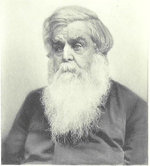Colburn School (Lowell, Massachusetts)
1848 establishments in MassachusettsGreek Revival architecture in MassachusettsHistoric district contributing properties in MassachusettsNRHP infobox with nocatNational Register of Historic Places in Lowell, Massachusetts ... and 3 more
School buildings on the National Register of Historic Places in MassachusettsSchools in Lowell, MassachusettsUse mdy dates from August 2023

The Colburn School is a historic former school building at 136 Lawrence Street in Lowell, Massachusetts, USA. Built in 1848, it is a fine example of institutional Greek Revival architecture, and is one of the city's older surviving school buildings, built during the rapid population growth that followed the city's industrialization. Now converted to apartments, it was listed on the National Register of Historic Places in 1995.
Excerpt from the Wikipedia article Colburn School (Lowell, Massachusetts) (License: CC BY-SA 3.0, Authors, Images).Colburn School (Lowell, Massachusetts)
North Street, Lowell The Acre
Geographical coordinates (GPS) Address Nearby Places Show on map
Geographical coordinates (GPS)
| Latitude | Longitude |
|---|---|
| N 42.639722222222 ° | E -71.304444444444 ° |
Address
North Street 56
01825 Lowell, The Acre
Massachusetts, United States
Open on Google Maps










